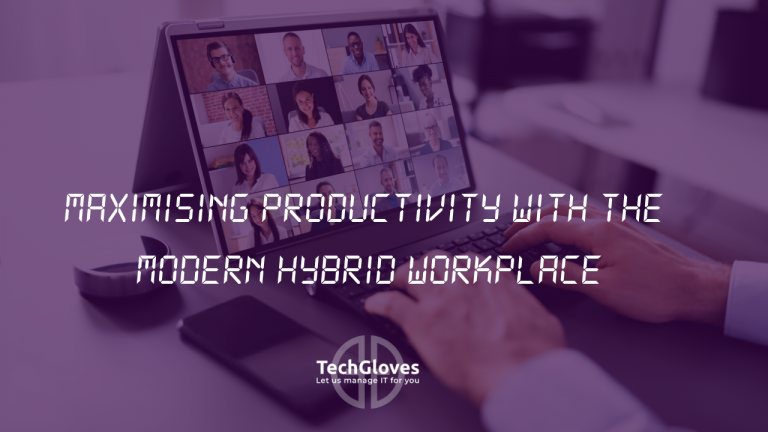The world of work has undergone a significant transformation. The hybrid workplace—a blend of in-office and remote work—has emerged as a dominant model, offering flexibility and efficiency. However, managing a hybrid workforce presents unique challenges. In this blog, we’ll explore how to effectively manage a hybrid team, the technology required, and best practices to ensure collaboration and productivity.
Understanding the Hybrid Workplace
A hybrid workplace combines the benefits of remote work and traditional office settings. Employees have the flexibility to choose where they work best, leading to increased job satisfaction and productivity. Businesses benefit from reduced overhead costs and access to a wider talent pool.
Challenges of Managing a Hybrid Workforce
While the hybrid model offers numerous advantages, it also introduces challenges. Communication gaps may arise, as remote employees can feel disconnected from their in-office counterparts. Coordination issues become apparent when scheduling meetings across different locations and time zones. Maintaining company culture is another hurdle, as fostering a cohesive culture with dispersed teams can be difficult. Additionally, there are security risks associated with ensuring data security across various networks and devices.
Essential Technology for the Hybrid Workplace
Implementing the right technology is crucial for overcoming these challenges.
Collaboration Tools
To facilitate communication and collaboration, businesses should utilise video conferencing tools like Zoom or Microsoft Teams, which allow for face-to-face interactions regardless of location. Instant messaging platforms such as Slack or Microsoft Teams enable real-time communication and quick information sharing. Project management software like Asana or Trello helps in task allocation and tracking, ensuring everyone stays on the same page.
Cloud Services
Cloud services play a vital role in a hybrid workplace. Cloud storage solutions like Google Drive or OneDrive ensure that files are accessible from anywhere, promoting seamless collaboration. Cloud computing allows employees to run applications without relying on local hardware, providing flexibility and reducing dependency on physical office infrastructure.
Security Solutions
Security is paramount when employees are accessing company resources from various locations. Virtual Private Networks (VPNs) provide secure remote connections to the company’s network. Endpoint security measures protect devices from malware and cyber threats. Implementing Multi-Factor Authentication (MFA) adds an extra layer of security for accessing company resources, ensuring that only authorised personnel can gain access.
Hardware Considerations
Reliable devices are essential for productivity. Employees should have laptops and mobile devices with up-to-date specifications to handle modern applications. Peripheral equipment like quality headsets, webcams, and monitors enhance the remote working experience. Ensuring employees have access to high-speed internet is also critical, so network infrastructure should be evaluated and supported as necessary.
Best Practices for Managing a Hybrid Workforce
To effectively manage a hybrid workforce, certain best practices should be adopted.
Establish Clear Communication Channels
Regular check-ins are important to keep everyone aligned and address any issues promptly. Using unified platforms for communication helps avoid fragmentation and confusion. Encouraging transparent communication fosters an environment where open dialogue and feedback are welcomed.
Set Expectations and Policies
Clearly defined working hours, such as core hours when all team members are available, help in scheduling and coordination. Establishing guidelines for email and message response times ensures that communication remains efficient. Outlining expectations for tasks and projects, including deliverables and deadlines, provides clarity and direction.
Foster Company Culture
Maintaining company culture in a hybrid environment requires intentional effort. Organising virtual team-building events can help build relationships among team members. Recognition programmes that publicly acknowledge and reward achievements contribute to a positive work environment. Ensuring that new remote employees feel welcomed and integrated through effective onboarding processes is also crucial.
Provide Necessary Training
Offering technology training helps staff utilise new tools and platforms effectively. Regular training on cybersecurity best practices raises awareness and reduces the risk of security breaches. Providing opportunities for professional development allows employees to enhance their skills and grow within the company.
Ensure Cybersecurity
Keeping all software and systems up to date is essential for security. Encouraging the use of secure Wi-Fi networks and VPNs helps protect data. Implementing robust backup solutions prevents data loss in case of unforeseen events.
Monitor Performance and Well-being
Setting measurable goals focuses on output rather than hours worked, promoting productivity. Providing support by being attentive to signs of burnout or disengagement helps maintain employee well-being. Creating channels for employees to voice concerns ensures that issues are addressed promptly.
The hybrid workplace is here to stay, offering a flexible and efficient way of working. By leveraging the right technology and implementing best practices, businesses can maximise productivity and maintain a cohesive team environment. Effective management of a hybrid workforce not only boosts performance but also enhances employee satisfaction.
At Tech Gloves, we’re experts in equipping businesses with the tools and strategies needed to thrive in a hybrid work environment. Let us help you navigate this new landscape with tailored solutions that meet your unique needs.
Let us manage IT for you.
📧 sales@techglovesit.com
☎️ 🇬🇧 +44 (0)20 3743 7663
🇪🇸 +34 865 615 093
💻 techglovesit.com

